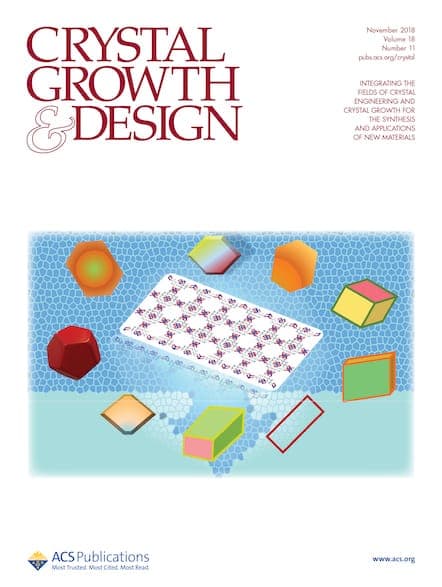It is my pleasure to introduce a special Crystal Growth & Design (CGD) virtual issue, with contributions representative of the amazing new authors contributing to CGD. The diversity in topics and national origin is truly representative of a journal which over the last almost 20 years has sought to “Crystallize the Community.” The aim of […]
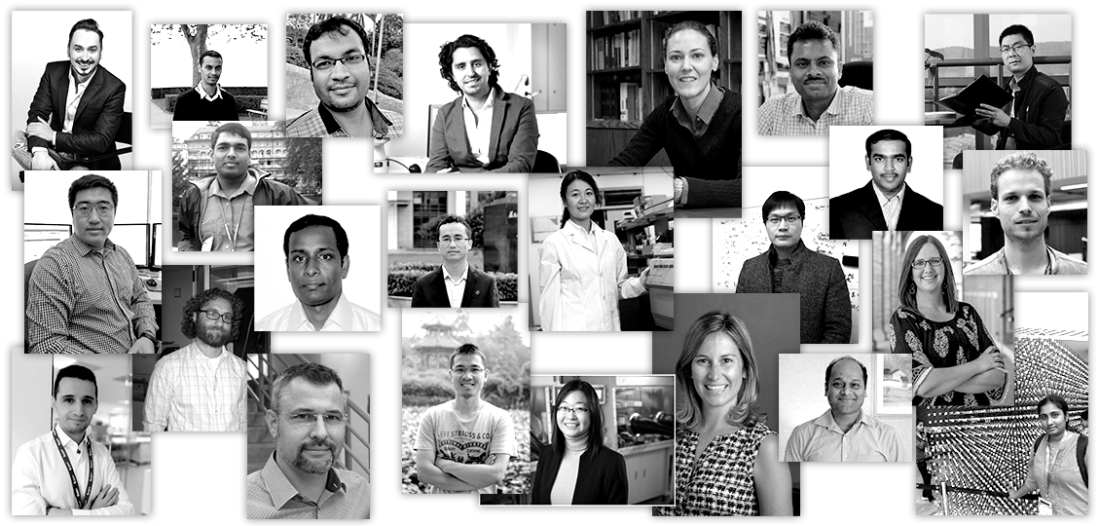
It is my pleasure to introduce a special Crystal Growth & Design (CGD) virtual issue, with contributions representative of the amazing new authors contributing to CGD. The diversity in topics and national origin is truly representative of a journal which over the last almost 20 years has sought to “Crystallize the Community.”
The aim of Crystal Growth & Design is to stimulate cross-fertilization of knowledge among scientists and engineers working in the fields of crystal growth, crystal engineering, and the industrial application of crystalline materials. In this virtual collection, you will find 22 publications with featured authors from nine countries, which exemplify this aim and reflect state-of-the-art progress in these fields. The scope of science and application in this virtual issue is truly representative of the inclusiveness and diversity which are hallmarks of CGD. See if you can find all of the papers that touch on important topics such as Co-Crystals, Crystal Engineering, Crystal Growth, Halogen Bonding, Hydrogen Bonding, Mechanochemistry, MOFs, Nucleation, pi-pi Stacking, Simulation and Modeling, Solid State Synthesis, and Supramolecular Chemistry, or applications such as Catalysts, Nonlinear Optics, Pharmaceuticals, and Sensing, and compare these to the topics on CGD covers.
Our emerging authors are clearly the next line of excellent science and application which I personally cannot wait to see come to fruition. Browsing through the publications, the biographies, and the sense of humor contained within this virtual issue provides ample confidence that this field and this community are set to continue to make important contributions to science and technology now and for the foreseeable future.
Robin D. Rogers
Editor-in-Chief, Crystal Growth & Design
Click on an author’s name to learn more about them and check out their research in the table below.
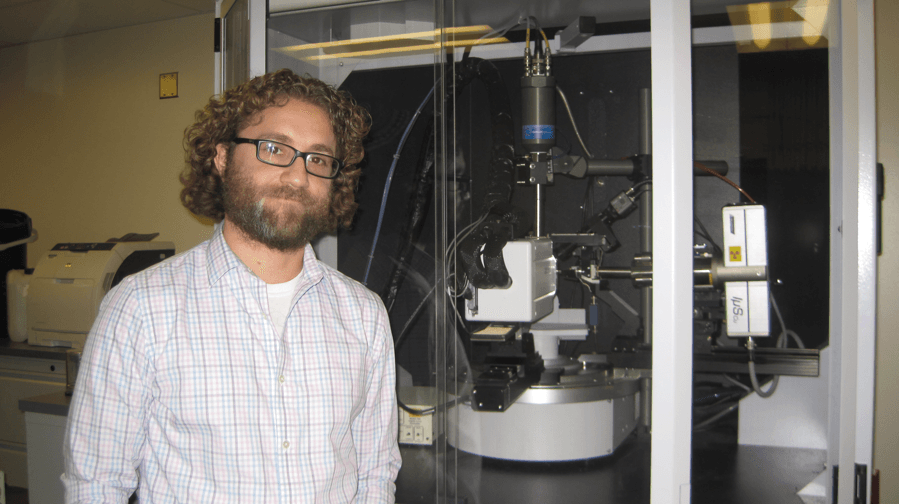
Douglas Genna was born in Bucks County, Pennsylvania, just north of Philadelphia. He received his B.S. in 2006 from Haverford College working in the area of total synthesis with Fran Blase. In the fall of that same year, he joined the lab of Gary H. Posner at The Johns Hopkins University, where he studied chirality transfer in allylic substitution chemistry and the copper-mediated conversion of carboxylic acids into ketones. In December 2011, he defended his thesis and joined the lab of Melanie S. Sanford at the University of Michigan in January 2012 for his postdoctoral studies. In the Sanford lab, he studied the heterogenization of homogeneous catalysts inside metal-organic frameworks. After two and a half years in Ann Arbor, he joined the faculty at Youngstown State University in August 2014. His group’s research focuses on both organometallic and metal–organic framework chemistries. Specifically, the Genna Lab utilizes syntheses and spectroscopy to study the solution-phase mechanism of metal-organic framework formation.
Fun Facts:
- His group’s home-built “react Raman” setup was assembled using a hot plate and a paint can.
- Most of his group gatherings end in a competitive game such as ping-pong, bocce, giant Jenga, or Exploding Kittens.
ZHIHUA SUN
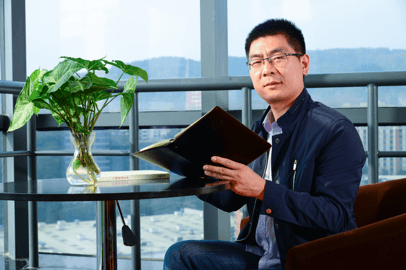
Zhihua Sun received his bachelor’s degree in chemistry from Shandong University in 2005. Five years later (2010), he received his Ph.D. degree and then joined Fujian Institute of Research on the Structure of Matter, Chinese Academy of Sciences. He has experience in growing quadratic nonlinear optical crystals for assembling optoelectronic devices. After his promotion to a full professor in 2016, his interests have focused on the design and controllable synthesis of molecule-based polar compounds, such as molecule-based ferroics, photo-ferroelectrics, and photosensitive ferroelectrics. He is a recipient of national and provincial-level awards, including the Excellent Youth Fund of NNSFC, Outstanding Youth Fund of Fujian Province, and Hundred Talents Program of Fujian Institute of Research on the Structure of Matter.
Fun Facts:
- Zhihua is a football lover and his favorite team is Real Madrid Football Club. In his opinion, both chemical research and football need a great sense of team spirit.
- In his leisure time, he enjoys cooking delicious Chinese foods for his son and daughter, behaving as a magician in the kitchen.
- He can play the Erhu, a musical instrument also called the Chinese violin.
WEI-HUI FANG
Wei-Hui Fang graduated from Huaqiao University in 2009 with a B.S. in chemical engineering. Then, she worked as a research assistant at Fujian Institute of Research on the Structure of Matter, Chinese Academy of Sciences (hereinafter FJIRSMCAS), where she got her start in inorganic chemistry research with Professor Guo-Yu Yang. In 2013, she received her Ph.D. degree in physical chemistry. From October 2016 to October 2017, she studied with Professor Dominic Wright at University of Cambridge as a visiting scholar under the sponsorship of China Scholarship Council. Her current research interest is the synthesis and application of metal oxo cluster based compounds, including lanthanide oxo clusters and titanium-oxo clusters.
Fun Facts:
- Wei-Hui has been fascinated by mysterious chemical reactions since high school and became interested in chemistry. Since she always got high scores in chemistry, she made a decision to be a science student at the university.
- Interest is important; it determines where you go. However, a good supervisor is supercritical in your research success; it determines how far you can go.
- Instead of studying colorful liquid change reactions, she is making colorful solid state crystals.
- Her favorite titanium oxo cluster is {Ti6P2}, because it can function as Lego-like building blocks to create colorful materials ranging from clusters to frameworks.
SANGEN ZHAO
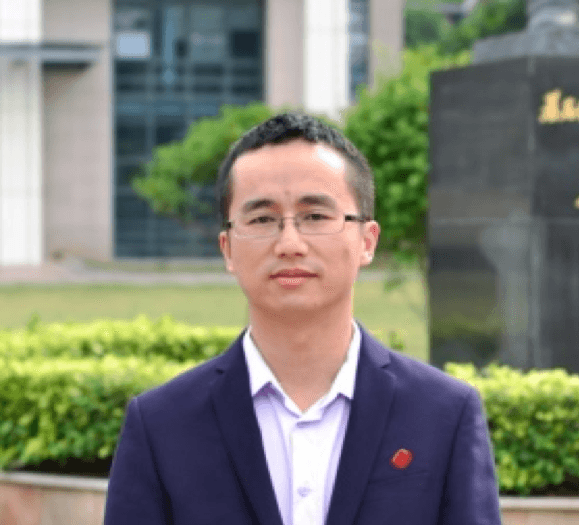
Sangen Zhao is Professor of Physical Chemistry at Fujian Institute of Research on the Structure of Matter, Chinese Academy of Sciences. He graduated from Southwest University and received his B.S. in 2007. He got his start in nonlinear optical materials research in the laboratory of Professor Yicheng Wu at Technical Institute of Physics and Chemistry and was awarded his Ph.D. in 2012. He then joined the faculty in Physical Chemistry at Fujian Institute of Research and has devoted his research efforts to the synthesis, crystal growth, characterizations, and structure-property relationships of nonlinear optical materials. In particular, he and his co-workers have discovered a series of beryllium-free nonlinear optical materials and revealed the deep mechanisms of their outstanding performance. Now, he and co-workers are working on the potential practical applications of these materials in the future.
Fun Facts:
- His father gave him the Chinese name Sangen because he was considered to lack the wood element, according to the ancient theory of the Chinese Five Elements.
- He is a fan of Stephen Curry, a basketball player for the NBA Golden State Warriors.
- He often plays football but rarely plays basketball.
KARAH E. KNOPE
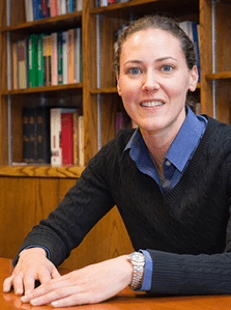
Karah E. Knope earned her B.A. in chemistry from Lake Forest College and her Ph.D. in inorganic chemistry from The George Washington University. She joined the Heavy Elements and Separation Science group at Argonne National Laboratory in 2010 as a postdoctoral researcher and accepted a staff position in the Chemical Sciences and Engineering Division in 2012. In August 2014, she joined the faculty at Georgetown University as the Clare Boothe Luce Assistant Professor in Chemistry. In 2018, she was the recipient of a DOE Early Career Research Program award. Her research broadly focuses on self-assembly processes, phase formation, and structure-property relationships in bismuth and f-element materials.
Fun Fact:
- When she was younger, her parents owned bookstores and often brought home books describing various science experiments. From an early age, she was captivated by crystal growth experiments. In fact, you might say that those early experiments “seeded” her interest in crystal growth and structural analysis. When she found out she could make a career growing crystals and analyzing structure-property relationships, she was hooked.
BURAK ERAL
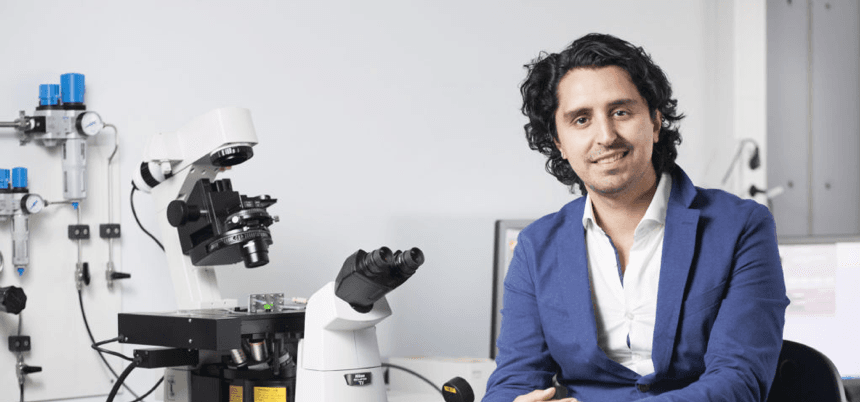
Burak Eral obtained his Ph.D. degree at the University of Twente, the Netherlands, in 2012. He then moved to the Massachusetts Institute of Technology to work with Professor Patrick S. Doyle and Professor Allan Myerson at MIT-Novartis Center for Continuous Manufacturing. Since October 2016, he has been working as a tenure-track assistant professor at Delft University of Technology. He also holds a guest faculty position in Van’t Hoff labs in Utrecht University since 2015. He is currently serving on the board of Delft Process Technology Institute. His curiosity spans crystal engineering, complex fluids (soft matter) and colloidal physics, and hydrodynamics/microfluidics. He aims to extend the current understanding of the physical mechanisms governing the dynamics and phase behavior of soft matter systems that play a critical role in manufacturing and separation processes involving complex fluids, flow, and crystallization.
Fun Facts:
- Burak hails from a tiny fishing village, Ayvalik, on the Turkish Aegean coast overlooking the Greek island of Lesbos.
- A life-long basketball fan, Burak still plays in his local club in Utrecht, the Netherlands.
- His favorite activity is fishing in the brilliant blue waters of the Aegean Sea.
PARTHAPRATIM MUNSHI
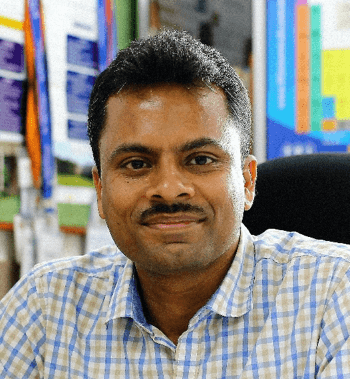
Following his Ph.D. studies under the supervision of Professor T. N. Guru Row at the Indian Institute of Science, Bengaluru, India, Dr.Parthapratim Munshi joined Professor Mark A. Spackman’s group at the University of Western Australia, Perth, as a postdoctoral fellow. Subsequently, he received the prestigious European fellowship, the Marie-Curie International Incoming Fellowship, to work with Dr. Christian Jelsch at Nancy University, Nancy, France. Afterwards, he worked as a postdoctoral research scientist at the Oak Ridge National Laboratory, in Tennessee, USA. He joined the Chemistry Department of Shiv Nadar University, Dadri, India, in 2013, and currently he is Associate Professor and Head of the Department. His research interests span several interdisciplinary projects. His research experiences include charge density analysis of organic molecular crystals and proteins, organic nonlinear optical (NLO) materials, protein crystallography, ultra-high resolution X-ray and neutron diffraction methods for highly accurate structural studies, and neutron beamline development. Currently, his group is focusing on (i) structure-property relationships of organic multifunctional (optical, NLO, optoelectronic, ferroelectric, etc.) materials, including their design, synthesis, and device applications and (ii) studies of hydrogen bonding in proteins and protein-ligand interactions from ultra-high resolution diffraction data and the quantum crystallography viewpoint.
Fun Facts:
- He holds an M.Sc. degree in physics (solid-state physics), a Ph.D. degree in chemical sciences (crystallography), and is pursuing research in the field of materials chemistry and biological crystallography – science has no boundaries!
- Crystals may shine and look beautiful, but their structures reveal their true character! Looks can be deceptive, which he realized from his own experiences.
- He believes that working with an outstanding student is fun, but extracting the best out of a struggling student is challenging, and only a true mentor knows the right way.
- He took his first ever flight during his Ph.D. studies to attend the XIX Congress of the International Union of Crystallography, held in Geneva, Switzerland, in August 2002.
DOMINIK CINČIĆ
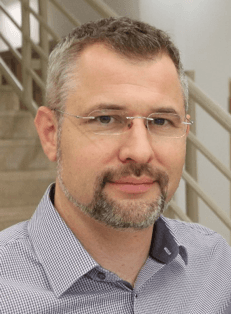
Dominik Cinčić is an associate professor at the University of Zagreb, Faculty of Science, Department of Chemistry. He received his B.Sc. (1999), M.Sc. (2005), and Ph.D. (2009) at the University of Zagreb with Professor Branko Kaitner. In 2007, he was a visiting researcher at the University of Cambridge under the supervision of Professor William Jones and Professor Tomislav Friščić. He is experienced in crystallization of molecular solids, polymorphism, cocrystals and salt screening of pharmaceuticals, mechanochemical and solvent-free synthesis of diverse organic and metal-organic materials, and crystallography. Current research in his group is focused on the study of halogen bonding synthons and their flexibility as well as crystal engineering of multicomponent halogen-bonded organic and metal-organic materials. Dominik is also involved in a variety of popularizing science activities and has experience as an organizer of the public events ”Open Day of the Chemistry Department“ and ”Open Day of the Faculty“. He was the recipient of the Croatian National Science Award for outstanding scientific discoveries in the field of supramolecular chemistry – halogen-bonded solids (2018), the annual award ‘Brdo‘ for the best teacher at the Department of Chemistry, administered by the Student Association at the Faculty of Science (2013, 2014, 2016, and 2017), and the Annual Young Scientist and Artist’s Award, administered by the Society of University Teachers, Scholars, and Other Scientists in Zagreb (2009).
Fun Facts:
- Dominik fell in love with chemistry in high school when he was 14. In 1993, he finished school for chemical technicians.
- His favorite experiment in general chemistry classes is the Dumas method of molecular weight determination, his favorite exam questions are about buffers and solution equilibrium, and his favorite solvent is ethanol.
- He is an enthusiastic cinephile and audiophile, and he loves music on vinyl.
- His favorite activity is coffee drinking (in the traditional Croatian way).
MANAS K. PANDA
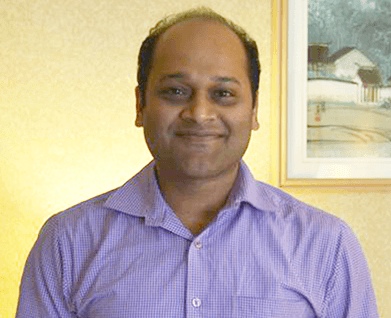
Manas K. Panda is from West Bengal, India, and got his preliminary education there. He received his B.Sc. in chemistry from Vidyasagar University and M.Sc. in chemistry from Jadavpur University Kolkara India. Subsequently, in 2010 he received his Ph.D. in the area of biomimetic catalysis from the Indian Institute of Technology (IIT) Bombay, India. After a short stay at Dow Chemical International Pvt. Ltd, Pune, India, he moved to the University of Crete, Greece, for postdoctoral research with Professor A. G. Coutsolelos, where he worked on developing metalloporphyrin-based complexes for dye-sensitized solar cells. In early 2013, he moved to New York University at the Abu Dhabi campus and joined Professor Panče Naumov’s research group as a postdoctoral associate where he started working in a fascinating area of crystal actuators. In 2014, he was promoted to Research Scientist there. In the middle of 2016, he returned to India to pursue an independent research career, and he joined CSIR-National Institute for Interdisciplinary Science and Technology at Thiruvanthapuram, Kerala. Currently he is a scientist fellow and AcSIR Assistant Professor there. His research interest lies in the area of solid-state chemistry and smart materials. Specifically, he is interested in designing and synthesizing organic or inorganic molecules to investigate their stimuli-responsive behavior, phase transition, and optical properties in the solid state.
Fun Facts:
- Manas follows a modified Steve Jobs quote: “stay hungry, stay curious”.
- Photography is still a hobby of his. Once upon a time, he spent hour after hour capturing scenic natural beauty. Now beauty has changed her face; he spends day after day on photography under a microscope!
- Some of his colleagues still call him “Man as Panda” (split version of his name).
RANJAN PATRA
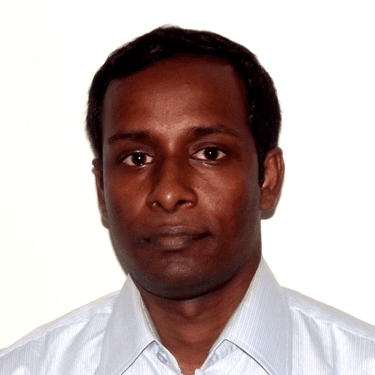
Ranjan Patra received his B.Sc. and M.Sc in chemistry from Vidyasagar University, India. He continued his studies towards a Ph.D. at Indian Institute of Technology Kanpur, where the focus of his work centered on bioinorganic chemistry of heme systems. He was subsequently a postdoctoral scholar at Tel-Aviv University, Israel, with Professor Israel Goldberg, where he studied porphyrin-based supramolecular networks sustained by weak noncovalent interactions. He continued his second postdoctoral work at The Johns Hopkins University, USA, with Professor Justine P. Roth, where he studied mechanistic investigations of transition metal catalyzed water oxidation. After a span of one year in the USA, he moved to University of Grenoble, Alpes, France, to work with Professor Jean-Marc Latour and Professor Pascale Maldivi where his focus was on the mechanistic investigation of transition metal catalyzed amination reactions. He is currently DST-INSPIRE faculty in the Department of Chemistry, Panjab University, Chandigarh, India. His research interests are bioinorganic modeling of heme and non-heme metalloenzymes, coordination chemistry, design and synthesis of hydrogen and halogen bonded supramolecular networks, crystal engineering, and polymorphism. He is a visiting scientist at the University of Manchester, UK, and a recipient of the DST-INSPIRE Faculty Award.
Fun Facts:
- Many amazing people have inspired him along the way, from professors and collaborators to graduate school labmates and classmates, and now all of the talented students and researchers in his group. He only hopes that he can give back as much as he learns from everyone. It helps to stay curious and be open to other’s opinions and to realize that everyone has something to contribute.
- He always believes that confidence and hard work are the best medicine to kill the disease called failure.
PANČE NAUMOV
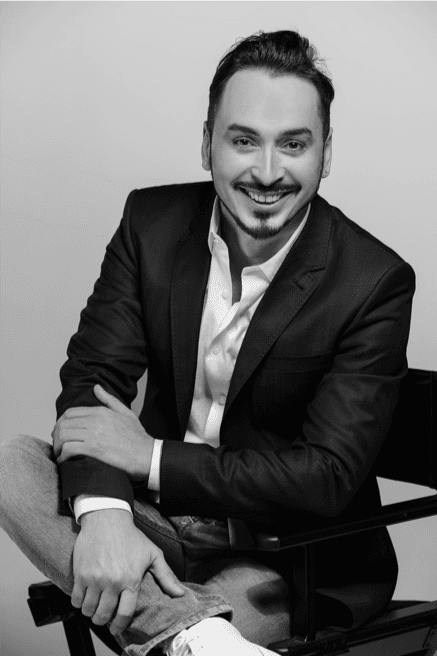
Panče Naumov is a native of Macedonia, where he was educated, and worked briefly at Ss. Cyril and Methodius University in Skopje. After earning his Ph.D. in chemistry and materials science from Tokyo Institute of Technology in 2004, Dr. Naumov continued his research at the National Institute for Materials Science (NIMS) in Japan. In 2007, he was appointed Associate Professor at Osaka University, where he led a small but very active research group. After a short stint at Kyoto University, in 2012 he joined New York University, where he is now a tenured faculty member at their portal campus in Abu Dhabi, the UAE. His publication portfolio includes over 200 publications that have been cited more than 3300 times, with a current h-index of 32. He has also contributed three book chapters and a couple of academic manuals. At research conferences, he has presented over 300 times and has given about 50 invited talks and 30 invited seminars at various institutions. He is an active reviewer for more than 50 journals published by the Nature Publishing Group, American Chemical Society, Royal Society of Chemistry, Wiley-VCH, Elsevier, and other publishers. He serves as a reviewer with several national funding agencies. Dr. Naumov is a recipient of Harvard University’s Radcliffe fellowship, Friedrich Wilhelm Bessel Research Award from the Alexander von Humboldt Foundation, Asian and Oceanian Photochemistry Association Prize for Young Scientists, Japanese Ministry of Science Fellowship, and Global Center of Excellence Fellowship, among other awards. He is a founder of the UAE Chapter of the American Chemical Society, member of the Scientific Advisory Board of the International Society of Bioluminescence and Chemiluminescence (ISBC), member of the Advisory Board of the International Conference on the Chemistry of the Organic Solid State (ICCOSS), and Councilor of the European Crystallographic Association (ECA), among other roles.
Fun facts:
- He made a makeshift chemistry lab in the basement of his parents’ house when he was 14. The house remained intact.
- Out of the many crystal structures he has determined, the three he is most proud of are those of the artificial sweetener sodium saccharinate (“Sweet’N Low”), the active ingredient of the anti-influenza agent Tamiflu, and the light-emitting molecule of the fireflies, oxyluciferin.
- He likes dogs and growing rare and medicinal plants in the conservatory of his lakeside summer house in Macedonia.
ASHLEE J. HOWARTH
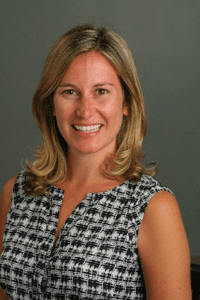
Ashlee J. Howarth was born and raised in London, Ontario, Canada. She obtained her undergraduate degree from the University of Western Ontario in 2009, and then went on to do her Ph.D. in inorganic materials chemistry at the University of British Columbia under the supervision of Michael O. Wolf. Before joining the faculty at Concordia, she completed an NSERC postdoctoral fellowship at Northwestern University with Joseph T. Hupp and Omar K. Farha. In 2017, Ashlee was recognized by Forbes Magazine as a “30 under 30” in Science. Research in the Howarth group is focused on the design and synthesis of metal-organic frameworks targeting applications in wastewater remediation and chemical sensing.
Fun Facts:
- Ashlee became interested in chemistry in elementary school when her parents bought her a “make your own battery” set.
- Ashlee’s favorite MOF is NU-1000 (because of her time at Northwestern).
C. M. NAGARAJA
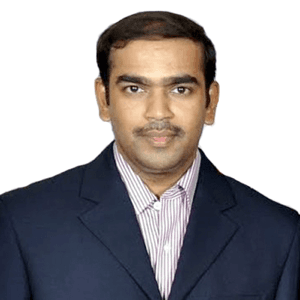
M. Nagaraja is Associate Professor of Chemistry at Indian Institute of Technology Ropar. He received his M.Sc. degree in chemistry from Bangalore University in 2000. After a year of a teaching job, he moved on to Indian Institute of Science for his doctoral research, where he worked with Professor Balaji Rao Jagirdar on the development of highly reactive transition metal complexes for activation of unreactive bonds in small molecules and obtained a Ph.D. degree in 2007. Subsequently, he moved to Brandeis University, USA, for postdoctoral research and investigated the application of highly reactive trialkylsilylium cations for hydrodefluorination reactions. Later, at Jawaharlal Nehru Centre for Advanced Scientific Research (JNCASR), Bangalore, he worked on multifunctional coordination polymers, and then became fascinated by the structural and functional properties of porous metal-organic frameworks (MOFs). Current research in his group focuses on the design and synthesis of porous MOFs for selective capture and subsequent utilization of carbon dioxide as a C1 source for synthesis of value-added chemicals and fuels.
Fun facts:
- Nagaraja became interested in chemistry during his early education and became fascinated by the power of chemistry to create new molecules with potential applications.
- He had the opportunity to work with the most inspiring people among his teachers.
- He is fascinated by the diverse structural topologies of MOFs.
SHAILESH AGRAWAL
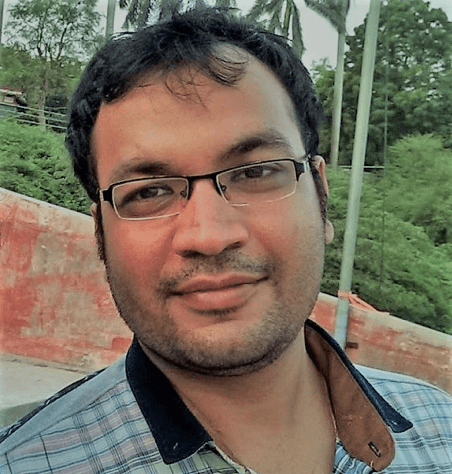
Shailesh Agrawal received his B.Tech. from Nagpur University, India, in 2005, and then moved to Institute of Chemical Technology (ICT, formerly UDCT), Mumbai University, for his postgraduate work in bioprocess technology. He worked on the recovery of whey proteins and lactose crystallization for his research thesis. He then received a Government of New Zealand scholarship to pursue a Ph.D. in the area of lactose crystallization at Massey University, where he worked in close collaboration with the dairy industry, spending significant time studying industrial crystallization processes. He finished his Ph.D. in 2012 and then worked at the Riddet Institute at Massey University for a year as a research officer looking into sanitation issues in the dairy industry. He then moved back to India to take up an academic career and is currently working as Assistant Professor at Visvesvaraya National Institute of Technology, Nagpur. He is the recipient of Nagpur University’s Gold Medal for securing the first position in the department, Best M.Tech. Thesis Award at ICT, Mumbai, and Dean’s List of Exceptional Theses at Massey University.
Fun facts:
- While in New Zealand, he indulged in trekking and undertook a four-day Nelson Lakes National Park trek, climbed Mt. Taranaki, and hiked the Tongariro Crossing (ranked among the best day treks in the world).
- He is passionate about teaching and loves interacting with students.
- Recently, he has taken up drawing sketches and caricatures after viewing a TEDx talk “Why people believe they can’t draw – and how to prove they can” by Graham Shaw.
- Nagpur, his hometown, is known as the Tiger Capital of India due to the presence of numerous national parks having a significant tiger population within a couple of hours’ drive from the city.
YING DIAO
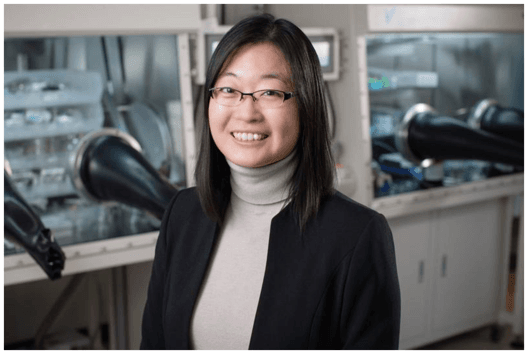
Ying Diao is the Dow Chemical Company Faculty Scholar and Assistant Professor at University of Illinois at Urbana-Champaign since 2015. She received her Ph.D. degree in chemical engineering from MIT in 2012. Her doctoral thesis was on understanding heterogeneous nucleation of pharmaceuticals by designing polymeric substrates. In her subsequent postdoctoral training at Stanford University, she pursued research in the thriving field of printed electronics. The Diao group, started in January 2015 at the University of Illinois, has been developing fundamental understanding and innovative methodologies for directed assembly of functional materials, their morphology characterizations using advanced X-ray techniques, and their applications in the areas of electronics, renewable energy, and healthcare. Her work has frequently been featured in science journals and news media such as Science magazine, Nature Materials, ScienceDaily, the American Chemical Society, the Royal Society of Chemistry, the Materials Research Society, and AAAS. She is a recipient of the Spicer Young Investigator Award from DOE’s SLAC National Lab, and was named to MIT Technology Review’s annual list of Innovators Under 35 as a pioneer in nanotechnology and materials. Dr. Diao is also a recipient of the NSF CAREER Award, 3M Non-Tenured Faculty Award, and was selected as a Sloan Research Fellow in Chemistry as one of the “very best scientific minds working today”.
Fun Fact:
- Her group’s beautiful crystals (often from failed experiments) have frequently won “Science as Art” image competitions. One such artwork, named ‘’A semiconductor rose by any other name”, is displayed at the University of Illinois Willard Airport.
GUOHONG ZOU
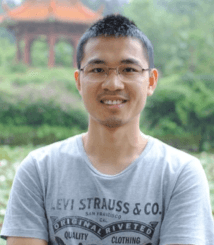
Guohong Zou was born in Hengyang, P. R. China, in 1985. He earned his B.S. degree from Central South University, China, in 2008, and his Ph.D. degree in material physics and chemistry from Fujian Institute of Research on the Structure of Matter, Chinese Academy of Sciences (FJIRSM, CAS) in 2013 under the direction of Professor Ning Ye. He began independent research at the New Materials R&D Center, China Academy of Engineering Physics, on novel nonlinear optical materials. From 2015 to 2017, he carried out postdoctoral research at Chung-Ang University where he collaborated with Professor Kang Min Ok on UV nonlinear optical crystals. Since joining the faculty of Sichuan University in China, he has performed research on new inorganic deep-UV nonlinear optical crystals such as carbonates and nitrates.
Fun Facts:
- Crystal: Guohong became interested in chemistry in high school from his chemistry teacher, who demonstrated the crystal growth of beautiful, blue CuSO45H2O crystals.
- Carbonate: He grew the first deep-UV carbonate crystals using a high-temperature solid-state method.
- Cooking: He likes cooking as much as he likes chemistry. Also, he thinks that synthetic chemistry is cooking with the elements.
PALASH SANPHUI
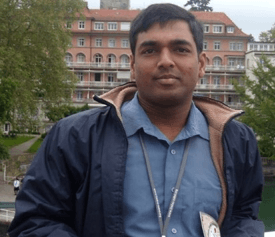
Palash Sanphui graduated in 2007 from IIT Kharagpur, with an M.Sc. in chemistry, where he was introduced to the fascinating world of small molecule crystallography during a one-year master’s project under the supervision of Professor Kumar Biradha. He received his Ph.D. in chemistry (crystal engineering) in 2012 from University of Hyderabad under the guidance of Professor Ashwini Nangia, where he mainly worked on small molecular synthesis, the study of hydrogen bonding, and structure-property correlation of pharmaceuticals. In recognition of his graduate research, he received the first runner-up prize of the K. V. Rao Society Memorial and Oration Awards in the category of Young Research Scientist Award in July 2011. He has worked as the Dr. D. S. Kothari Postdoctoral Fellow with Professor Gautam Desiraju at the Indian Institute of Science on tuning pharmaceutically relevant properties and correlation with crystal structures. Further, he joined Lupin Ltd. as a polymorph specialist in 2014 and filed several Indian/WO patents based on novel solid forms of drug molecules. Since 2017, he has served as Assistant Professor at SRM Institute of Science and Technology. His research group focuses on pharmaceutical solid form development of malarial drugs, collaborating with the pharma industry, and is interested in developing supramolecular gels of antitumor drugs.
Fun Facts:
- He is from Kolkata, popularly known as the “City of Joy” and cultural city of India.
- He likes teaching chemistry and is passionate about doing research.
- He likes to enjoy the spectacular landscape of regional India and talk with new people, as he believes every person has valuable knowledge to share.
GEETHA BOLLA
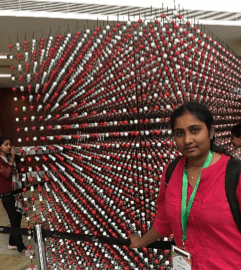
Geetha Bolla graduated with a master’s degree with the most prestigious distinction rank from Andhra University and a specialization in organic chemistry. She received her Ph.D. degree from University of Hyderabad in 2015, after qualifying for the CSIR-UGC National Eligibility Test under the supervision of Professor Ashwini Nangia. Then she spent a year as a visiting research scholar at ICCAS, Beijing, and then was awarded the most competitive INDO-USA postdoc fellowship to pursue her research in heterogeneous nucleation with Professor Allan. S. Myerson at CHEME, MIT, USA, where she established SURMOF induced polymorphs and morphology changes for pharma drugs. Her research has mainly centered on organic solid-state chemistry, nucleation, crystal engineering, and crystallization studies with newly designed molecules for better applications, especially in crystal engineering, polymorphism, and cocrystals of smart materials, optoelectronics, and pharma drugs.
Fun facts:
- She is from Andhra Pradesh, which is also known as the Rice Bowl of India, and was passionate about science at school where she read about diamonds as an example of Kohinoor (which was obtained where she lived every day).
- Her interest developed in growing crystals and showing them to kids in school. She likes to design her garden plants in different crystal shapes.
- For fun as an undergraduate, she used lab ethanol to remove nail polish.
DRITAN HASA
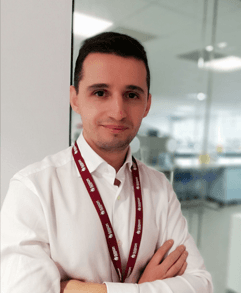
Dritan Hasa graduated in pharmaceutical chemistry and technology at the University of Trieste, Italy, where he also obtained a Ph.D. in chemical and pharmaceutical science and technology under the supervision of Professor Dario Voinovich. His Ph.D. thesis dealt with mechanochemically induced defects in molecular crystals. He spent one year as a postdoctoral researcher working on a project that involved industrial partners. Subsequently, Dritan moved to the Department of Chemistry, University of Cambridge, UK, where he spent more than two years working with Professor Bill Jones. He investigated new applications of pharmaceutical polymeric materials for promoting crystallization and controlling polymorphism in the solid state. Dritan joined the Leicester School of Pharmacy in March 2017 as Vice-Chancellor Lecturer of Pharmaceutics. He has been also a visiting scientist at the University College Cork (Ireland) working with Professor Caitriona O’Driscoll, and at the University of Dusseldorf (Germany), where he learned about hot melt extrusion from Professor Peter Kleinebudde. His research group focuses on fundamental research on issues surrounding different aspects of crystallization and polymorphism in single and multicomponent materials. He is also exploring new (green) applications of cocrystallization technology.
Fun Facts:
- Dritan needed to explore both “worlds” of disordered (amorphous) and crystalline materials to understand that the structure of solids, in most cases, is something in between.
- His preferred leisure time activity is traveling, especially visiting medieval castles.
- Dritan still believes he can become a famous drum player, and he is waiting for the right moment to register for his first drum class and get ready for that big break!
RENÉ R. E. STEENDAM
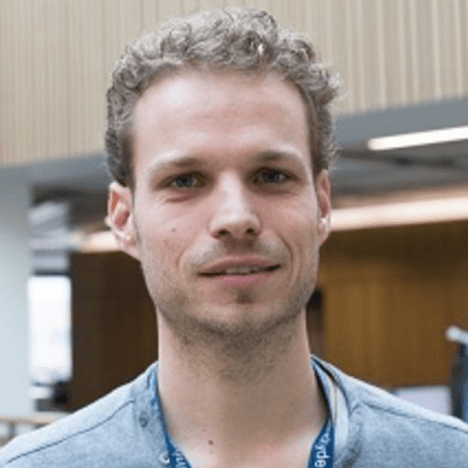
René Steendam was born in the Netherlands and obtained his master’s degree in 2011 in chemistry at the Radboud University in Nijmegen. He continued with Ph.D. studies at the same university in the group of Professor Elias Vlieg and Professor Floris Rutjes, where he worked at the interface of synthetic organic chemistry and solid-state chemistry. The topic of his Ph.D. research was the synthesis, crystallization, and deracemization of chiral crystals through Viedma ripening and temperature cycling. After obtaining his Ph.D. in 2015, René was awarded an NWO Rubicon fellowship for postdoctoral research at the Continuous Manufacturing and Advanced Crystallization (CMAC) Center at the University of Strathclyde. At CMAC, he worked with Professor Joop ter Horst on the continuous crystallization and deracemization of chiral crystals. Since 2017, René has been employed as a research fellow in the group of Dr. Patrick Frawley at the University of Limerick within the Synthesis and Solid State Pharmaceutical Centre (SSPC). René’s research interests are synthetic organic chemistry, chirality, crystal nucleation, and industrial crystallization.
Fun Fact:
- Breaking things is key in his work, as René breaks chemical bonds, crystals, and chiral symmetry.
KRISTIN M. HUTCHINS
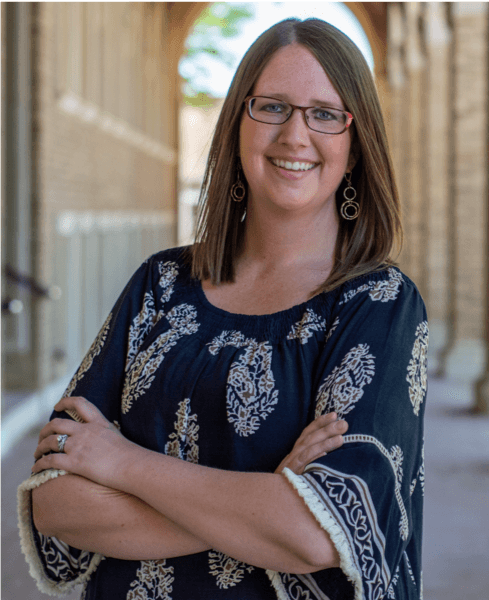
Kristin Hutchins graduated from the University of Iowa in 2010 with a B.S. in chemistry. She received her Ph.D. in chemistry, also from the University of Iowa, in 2015. While at Iowa, she worked with Professor Leonard R. MacGillivray, studying supramolecular chemistry, solid-state reactivity, and crystal engineering as a platform for designing functional materials. In recognition of her graduate research, she received the A. Lynn Anderson Award for Graduate Research Excellence from the Department of Chemistry at the University of Iowa in 2015. She spent two years at the University of Illinois at Urbana-Champaign (UIUC) as a postdoctoral research associate advised by Professor Jeffrey S. Moore. At UIUC, she investigated functionalized polymer colloids and synthesis of polymers at interfaces for applications in self-healing materials. Kristin joined the Department of Chemistry and Biochemistry at Texas Tech University as an assistant professor in September of 2017. Her research group focuses on designing and synthesizing supramolecular materials that can be used in applications ranging from water purification and environmental remediation to sensors and responsive materials.
Fun facts:
- Kristin fell in love with chemistry later than most; an opportunity to conduct undergraduate research was what convinced her to pursue a career in chemistry. She is excited to be able to give undergraduates the same opportunity.
- She enjoys listening to classic and hard rock music (Led Zeppelin, Metallica) and watching American football.
- Kristin enjoys being a member of an interdisciplinary community that includes scientists from organic, inorganic, and materials chemistry. Supramolecular chemistry can be applied to many different areas of research!
QIANG ZHANG
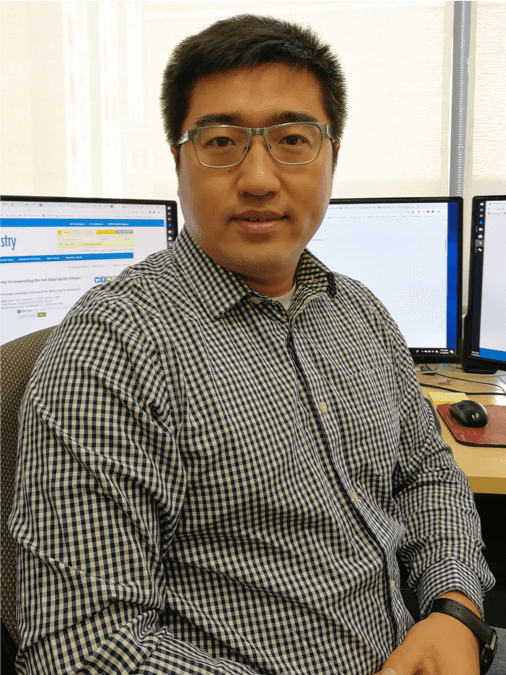
Qiang Zhang received his B.S. degree in chemistry in 2008 from Jilin University, China, where he worked on the fabrication of nanomaterials. He received his Ph.D. degree in inorganic chemistry in 2013 from the University of South Carolina under the guidance of Professor Richard D. Adams. His Ph.D. work centered on the fundamental study of transition metal cluster complexes. He was trained as a hardcore synthetic organometallic chemist and a crystallographer. As a crystallographer, he was deeply attracted to the fascinating structures of metal-organic frameworks (MOFs), and upon graduation, he pursued his postdoctoral training in the MOF field at Texas A&M University between 2013 and 2016 with Professor Hong-Cai Zhou. He started his independent research career in the Department of Chemistry, Washington State University, in 2016. On the basis of his diverse experiences in nanomaterials, organometallics, and MOFs, his current research interests range from the integration of nanomaterials and small molecules with porous materials to the creation of multifunctional materials for applications in catalysis and separation. His training in crystallography makes him interested in the crystal growth mechanisms for both MOFs and small molecules. The Zhang lab also is interested in the design and development of luminescent molecules and porous materials.
Fun Facts:
- Qiang’s very first chemistry lab experiment in middle school was to heat potassium permanganate to generate oxygen; he spilled it on his hand and believed he was going to die.
- His favorite elements are zirconium (Zr), hafnium (Hf), gold (Au), nickel (Ni), and germanium (Ge), not only because he works with these elements, but they also appear in his last name “ZrHfAuNiGe”.
- In his spare time, he enjoys fishing and woodworking. In fact, a number of his research ideas were developed while he was fishing or drilling.
- If he were not a chemist, he would be a mechanic because he loves taking things apart and putting the pieces back together.
RANJIT THAKURIA
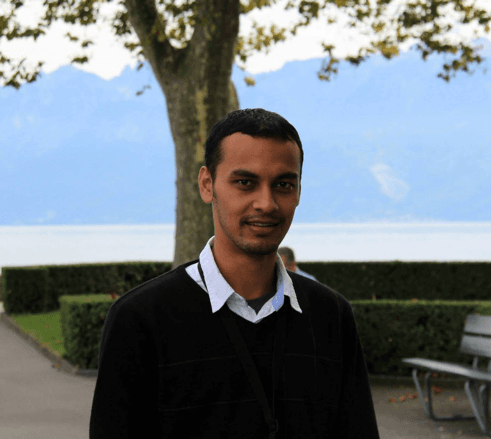
Ranjit Thakuria was born in 1982. He received his B.Sc. degree (2003) in chemistry from B. Borooah College and M.Sc. (2005) in organic chemistry as specialization from Gauhati University, India. He then moved to University of Hyderabad, where he received his Ph.D. (2011) in crystal engineering under the supervision of Professor Ashwini Nangia. After obtaining his Ph.D., Ranjit then moved to University of Cambridge, UK, to carry out postdoctoral research in Professor William (Bill) Jones’ group (2011-2012). During the one-year postdoctoral appointment, he worked on the surface response of cocrystals under controlled humidity using atomic force microscopy. Then he spent a year at Tel-Aviv University, Israel, as a postdoctoral researcher with (late) Professor Israel Goldberg (2013-2014). Since June 2014, he has been Assistant Professor in the Department of Chemistry at Gauhati University. His current research group focuses on pharmaceutical cocrystals, heterogeneous catalysis, and design and synthesis of functional materials based on mechanochemistry. He is the recipient of the DST-Young Scientist Award under Department of Science and Technology, India. He served as a guest editor for a Crystal Growth & Design virtual special issue on “π−π Stacking in Crystal Engineering: Fundamentals and Applications”.
Fun Facts:
- He was motivated to pursue chemistry as a career by his undergraduate teacher Mr. Subrata Kumar Barooah.
- Bill Jones and his group members from Cambridge are some of the influential people who shaped his research career.
- His favorite activities include watching movies and traveling to new places. His top three favorite movies of all time are Dinabandhu (Assamese), Khosla Ka Ghosla (Hindi), and The Dark Knight (English).
WENLONG YIN
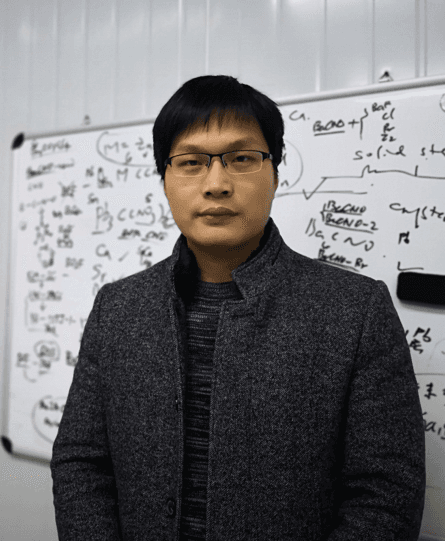
Wenlong Yin received a bachelor’s degree in materials physics from Sichuan University in Chengdu, Sichuan, in 2008 and then completed his Ph.D. in material science in 2013 at the Technical Institute of Physics and Chemistry, Chinese Academy of Sciences, in the research group of Professors Jiyong Yao and Yicheng Wu. He started his independent career as Assistant Professor at the Institute of Chemical Materials, China Academy of Engineering Physics at Mianyang, where he took a two-year leave (2015-2017) for his postdoctoral studies at University of Alberta, advised by Professor Arthur Mar. He rejoined the Institute of Chemical Materials in 2017 and was promoted to Associate Professor in the same year. Since his first experience with scientific research, he has been working on the synthesis, structure determination, and physical property characterization of new metal oxides, chalcogenides, and pnictides. He now leads a five-member group, including two graduate students, to search for next-generation infrared nonlinear optical (NLO) crystals.
Fun Facts:
- Barium is his favorite element. The majority of compounds reported by him, which possess intriguing structures or good nonlinear optical responses, contain barium.
- In the past, he loved to work out very much and could do more than 100 pushups in one minute. Now, he is lazy and has stopped to go to gym. Maybe he has too much pressure from his job.
- He is a funny person and loves his research. He jumps up and dances like a monkey in his lab after almost every successful structure refinement.
